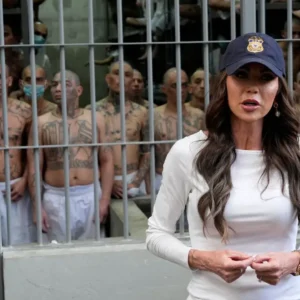Inspector General Report Highlights FBI’s Lapses in Handling Informants During January 6 Events
The Justice Department’s Inspector General, Michael Horowitz, released a much-anticipated report on Thursday, shedding light on the FBI’s use of confidential human sources (CHS) in connection with the January 6, 2021, breach of the U.S. Capitol. The report reveals significant shortcomings in intelligence management and coordination, raising questions about the FBI’s readiness and oversight during the events surrounding that day.
Horowitz’s investigation scrutinized the FBI’s deployment of confidential informants leading up to and during January 6, uncovering that 26 such sources were present at the Capitol—far more than the three officially assigned to monitor events.
Among these 26 sources:
- Four entered the Capitol building.
- Thirteen entered restricted areas outside the Capitol.
- Nine remained in non-restricted areas and engaged in no illegal activity.
The report confirms that none of these sources were prosecuted, nor were they authorized by the FBI to commit or incite unlawful actions. There is no evidence that informants played leadership roles in organizing the day’s events or directly incited violence.
Intelligence Failures
The report highlights missed opportunities and critical failures in intelligence gathering and communication:
- Lack of Preemptive Canvassing: The FBI did not conduct a thorough canvassing of its field offices before January 6 to gather potential intelligence from informants.
- Delayed or Unshared Intelligence: Field offices received warnings, including mentions of “storming the building” and forming a perimeter around the Capitol, but this information was not effectively shared with the Washington Field Office (WFO) or other agencies.
- Absence of Event-Specific Products: While detailed intelligence products were prepared for the January 20 inauguration, no similar measures were taken for the January 6 certification of Electoral College results.
Deputy Director Paul Abbate described the failure to canvass field offices as a “basic step that was missed.”
FBI’s Response and Preparedness
The FBI previously informed Congress that it had taken extensive measures to prepare for potential violence on January 6. However, the Inspector General’s findings contradict these claims, describing the Bureau’s approach as largely reactive. The lack of intelligence-sharing and coordination significantly hindered its ability to mitigate risks effectively.
The disparity between the FBI’s stated readiness and its actual posture underscores systemic weaknesses in how intelligence is managed, analyzed, and distributed.
Broader Implications
Horowitz’s report has reignited discussions about the FBI’s role in the events of January 6. While the presence of 26 confidential informants underscores the Bureau’s reliance on human intelligence, critics argue that failures in utilizing this intelligence contributed to the chaos.
Supporters, on the other hand, highlight the lack of evidence implicating FBI informants in wrongdoing, emphasizing the Bureau’s stated commitment to lawful conduct.
Recommendations for Reform
The report concludes with recommendations aimed at improving the FBI’s intelligence protocols and coordination, including:
- Mandating Pre-Event Canvassing: Ensure field offices conduct thorough intelligence-gathering before major national events.
- Enhancing Guidelines: Establish clearer protocols for managing and sharing intelligence from informants.
- Strengthening Oversight: Improve accountability and oversight within intelligence operations.
Looking Ahead
The findings serve as a stark reminder of the challenges law enforcement faces in managing large-scale events and highlight the necessity of proactive intelligence-sharing. As the nation continues to grapple with the aftermath of January 6, this report will likely fuel further debates about accountability, transparency, and the role of federal agencies in protecting democracy.





